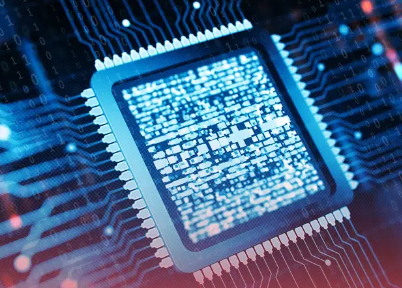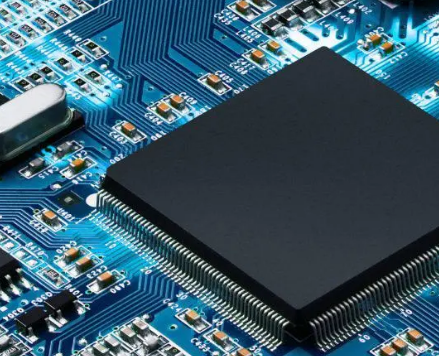What is an Integrated Circuit and Its Types
Otherwise shortened as ICs, integrated circuits are manufactured on a small piece of semiconductor material, such as silicon. They are also known as microchips or plainly as chips. ICs are an advancement from components such as diodes, capacitors, resistors, and transistors. Assembling such discrete components was a hustle that not only reduced the reliability of circuits, but also added to the workload.

On the flip side, integrated circuits can have anywhere from hundreds to millions of electronic components on just one silicon. This is responsible for the production of low-cost, reliable, and compact electronics such as computers and phones.
Depending on their functionalities, size, and complexity, integrated circuits are available in different types. They include microprocessors, memory ICs, mixed-signal ICs, digital ICs, and analog ICs.
Integrated circuits are miniature electronic devices that put together several electronic components, including capacitors, resistors, and transistors, onto one semiconductor substrate. These components are connected together and carry on specific functions, including memory storage, amplification, and digital signal processing. There are different types of integrated circuits, including the following:
Field-programmable Gate Arrays (FPGAs) – programmable ICs that can be reconfigured after they’ve gone through the manufacturing process. They are primarily applied in testing, prototyping, and the low-volume production of specialized digital circuits.
Application Specific ICs (ASICs) – used in particular applications such as cryptography, video processing, and audio processing.
Memory ICs – store data in electronic devices. Different types of memory ICs exist, including flash memory, RAM, ROM, and EEPROM.
Microprocessors – complete CPUs based on one chip. They are mainly applied in embedded systems, smartphones, and computers.
Mixed Signal ICs – they bring together analog and digital circuits on the same chip. They are ideal for power management, data conversion, and telecommunications.
Analog ICs – utilize continuous electrical signals. Appropriate for applications such as filtering, signal processing, and amplification.
Digital ICs – work with digital signals and are applied in smartphones, computers, and other forms of electronic devices.
What are Integrated Circuits Used for?Integrated circuits have applications across different systems and electronic devices. Some of the most common examples of how ICs are used include medical equipment, televisions, cars, computers, and smartphones.
Their ability to perform complex electronic functions makes integrated circuits advantageous in limited spaces. This has led to the increased functionality of electronic devices and miniaturization.
Integrated circuits perform several roles, including the following:
Storing data.
Processing data.
Amplifying signals.
Controlling the flow of current and voltage.
Generating and distributing power.
What is the Difference between Integrated Circuits and PCBs?In electronics, printed circuit boards and integrated circuits are different. While PCB connects and control electronic components, including integrated circuits, ICs carry on specified roles and functions. PCBs are plainly the physical boards that hold together and connect electronic components.
PCBs help to form a complete electronic circuit. They act as platforms to permit electronic components to be connected and arranged in a controlled and accurate manner.
Functions of Integrated CircuitsIntegrated circuits carry out a wide range of functions. Here are the most widely-known applications of ICs:
Amplification – They amplify electronic signals and make them robust and easier to manipulate and detect.
Control – they control other electronic components such as sensors, lights, and motors.
Communication – transmit and receive data using different communication protocols, such as Bluetooth, USB, and Ethernet.
Timing – generate and control accurate timing signals, which are ideal for many electronic apps.
Power management – regulates power supply to electronic devices. This guarantees safe and efficient functioning.
Signal processing – process signals such as extracting useful information and filtering unwanted noise.
Memory – store digital information in bits, bytes, or words.
Digital logic – performs Boolean logic applications such as OR, AND, XOR, and NOT. These operations build digital circuits.
Three Components of an Integrated Circuit
Here are the three primary components of an integrated circuit:
Resistors – control and limit the flow of electrical current in integrated circuits. Materials that make up resistors offer resistance to the flow of electrons.
Capacitors – they store and release electrical energy in integrated circuits. They have two conductive plates separated by insulating material.
Transistors – building blocks of integrated circuits. Switch and amplify electronic signals. Semiconductor materials make up transistors. They come in different types.
在线留言询价
- 一周热料
- 紧缺物料秒杀
| 型号 | 品牌 | 询价 |
|---|---|---|
| BD71847AMWV-E2 | ROHM Semiconductor | |
| MC33074DR2G | onsemi | |
| RB751G-40T2R | ROHM Semiconductor | |
| CDZVT2R20B | ROHM Semiconductor | |
| TL431ACLPR | Texas Instruments |
| 型号 | 品牌 | 抢购 |
|---|---|---|
| TPS63050YFFR | Texas Instruments | |
| ESR03EZPJ151 | ROHM Semiconductor | |
| BU33JA2MNVX-CTL | ROHM Semiconductor | |
| STM32F429IGT6 | STMicroelectronics | |
| BP3621 | ROHM Semiconductor | |
| IPZ40N04S5L4R8ATMA1 | Infineon Technologies |
- 周排行榜
- 月排行榜
AMEYA360公众号二维码
识别二维码,即可关注


请输入下方图片中的验证码:
























